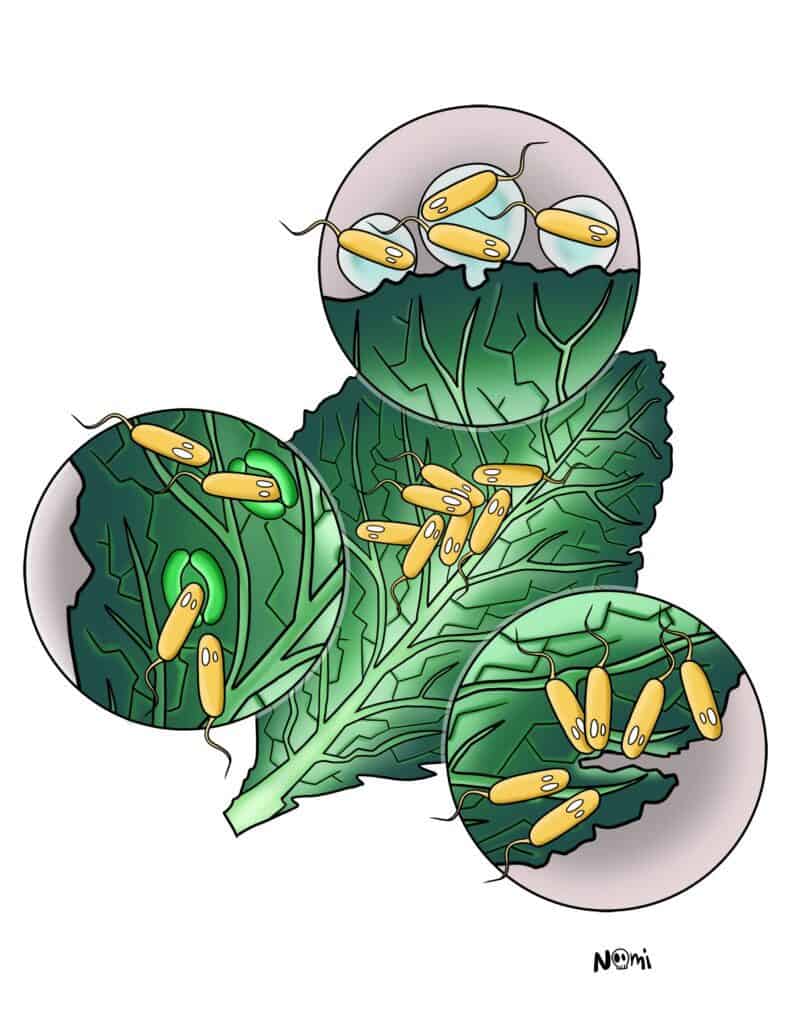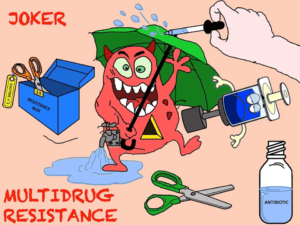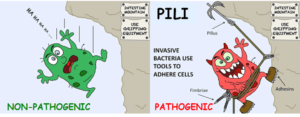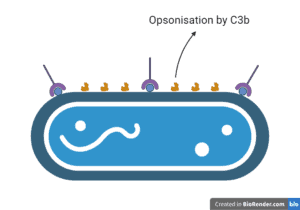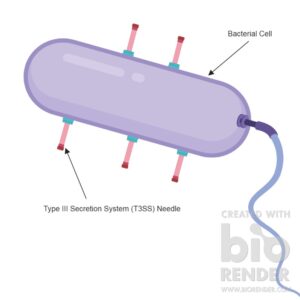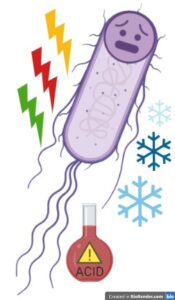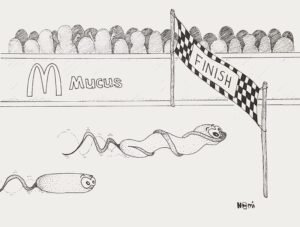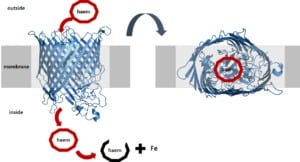To grow and survive, bacteria always look for places to live with lots of food and nutrients. These places can be environments like the human body, soil or even plants.
Yes, also plants have a lot of delicious and nutritious food for bacteria.
And just as bacteria can be good or bad for us and our bodies, bacteria can be good or bad for plants. Some bacteria help plants grow while other bacteria harm plants. These are the so-called plant-pathogenic bacteria.
These plant-pathogenic bacteria can infect plant leaves, roots or fruit. You might have seen weird spots on plant leaves or on crops or opened a spoiled piece of fruit.
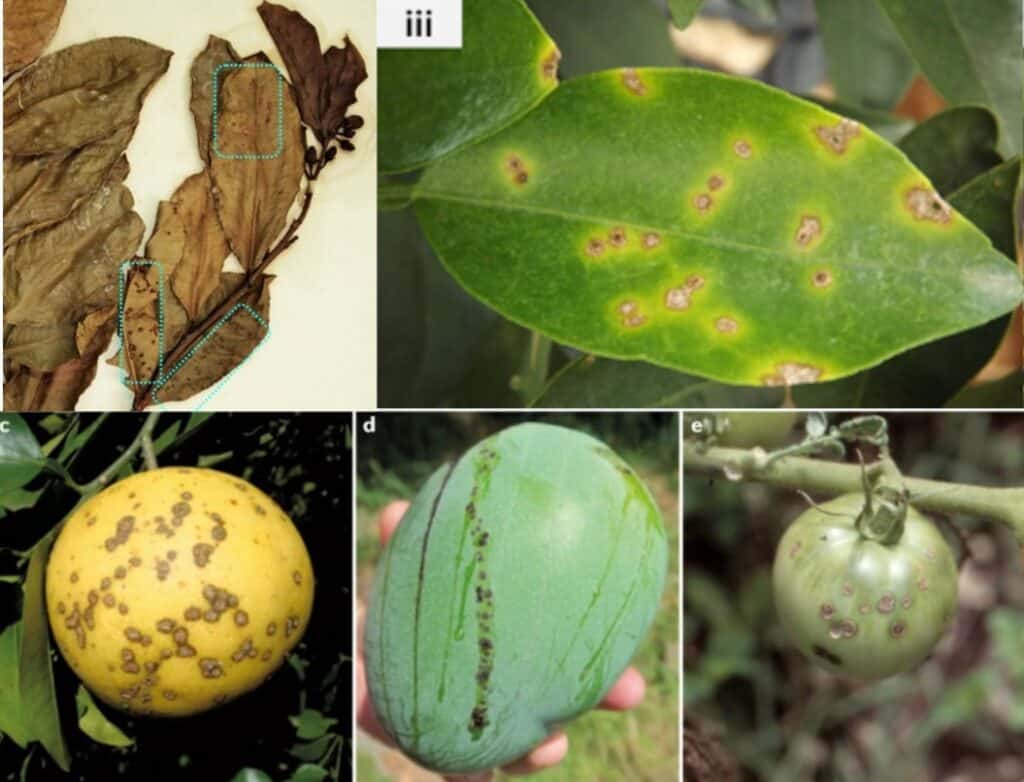
You can imagine that some bacteria developed some really smart ways to live in or on our bodies. Similarly, some bacteria found methods to live and thrive in and on plants and protect themselves from their immune attacks.
This means that plant-pathogenic bacteria learned to recognise that they landed on plants, enter them and cause diseases to use the plant’s nutrients. But before any of that happens, let’s have a look at where plant-pathogenic bacteria come from.
How do bacteria land on plants?
Bacteria are everywhere around us. They live on almost any surface – be it alive or not – but also in the air we breathe.
And some bacteria even live in clouds or on sand dust. Hence, through rain or sand storms, these bacteria are transported to new areas and arrive on new soils.
Other bacteria use animals or little bugs to get transported. When the transporting animal comes into contact with plants, it can brush off the hitchhiking bacteria.
When a bacterium comes into contact with a plant leaf, it uses special adhesion proteins to link to the plant surface. These proteins bind specifically to proteins on the plant.
After this happened, some plant-pathogenic bacteria like Xanthomonas form biofilms. These work like slimy houses that surround the bacteria and protect them from weather, sunshine or drought.
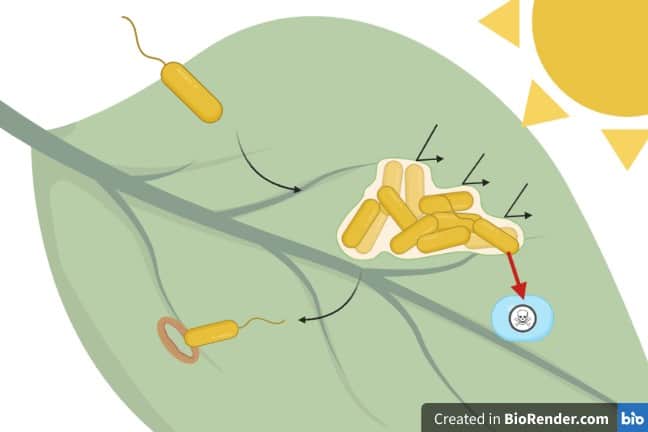
So, for now, the bacteria are safe inside their biofilm houses. In there, they can grow and reproduce and get ready for their big attacks.
How do bacteria know when they arrived on plants?
Before launching an attack to infect a plant, the bacterium needs to know that it actually IS on a plant. And for that, some bacteria learned to speak the language of plants.
Yes, also plants send out words to tell themselves and other plants what is going. These words are chemical molecules. And some bacteria developed special antennae or receptors on their surfaces to bind these molecules.
This means bacteria can listen to and understand what plants say. And this tells bacteria that they actually arrived on a plant.
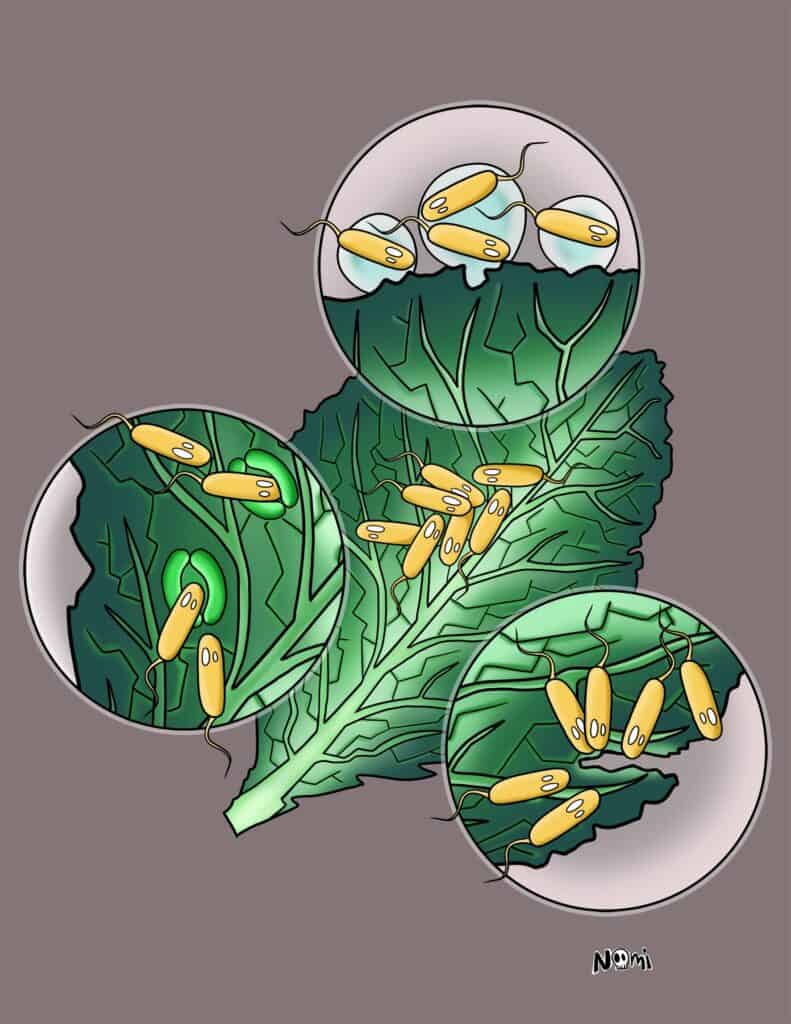
However, one bacterium cannot launch a plant-destroying attack by itself. It needs to know that it has support from its sibling bacteria. And for that, bacteria also talk to each other.
So, bacteria also send out words in the form of chemicals. And they listen to their own words so that they know that they are not alone. Now, they can start their attacks to make their way into the plant.
But plants also know how to protect themselves: Plants can interfere with bacterial chatter. For that, plants produce chemicals that bind these bacterial words. Now, bacteria cannot talk to each other anymore and think they are on their own, so an attack is probably not worth it.
And then there is the plant microbiome that protects the plant from bad things like harmful bacteria. However, plant-pathogenic bacteria learned to fight off the plant protection shields.
How do plant-pathogenic bacteria make their way into plants?
Even though plants have special protection mechanisms to keep bacteria from entering, plant-pathogenic bacteria found clever ways around them. Just as pathogenic bacteria can fight off our immune defences and end up making us sick.
As one way to protect against pathogenic bacteria, plants cover their surfaces with a waxy layer. This is a physical barrier for bacteria while it also prevents the water inside the plant from evaporating.
However, the bacterium Pseudomonas syringae developed its very own bacterial superpower to circumvent this barrier: This plant pathogen produces ice crystals even above freezing temperatures.
These ice crystals harm the waxy layer, cut open the plant envelope and cause the so-called frost injury. With such an injury, the plant loses water and the bacteria can enter the plant through the open wound.
Other plant pathogens move specifically towards the stomata on the surface of plants. These are the gates that let gases like carbon dioxide enter the plant. And interestingly, these bacteria produce certain chemicals that keep these gates open so that the bacteria can enter the plant.
Once the bacteria are inside the plant, they can start their attacks. For this, they use special bacterial weapons that transport toxins into the plant. These toxins then disrupt the plant from functioning properly and make them sick.
So, just as pathogenic bacteria learned to bind to and enter our human bodies, plant-pathogenic bacteria developed mechanisms to specifically enter plant organs. Hence, one goal of researchers is to understand how bacteria achieve this. The idea is to create plants that are resistant to plant-pathogenic bacteria.

